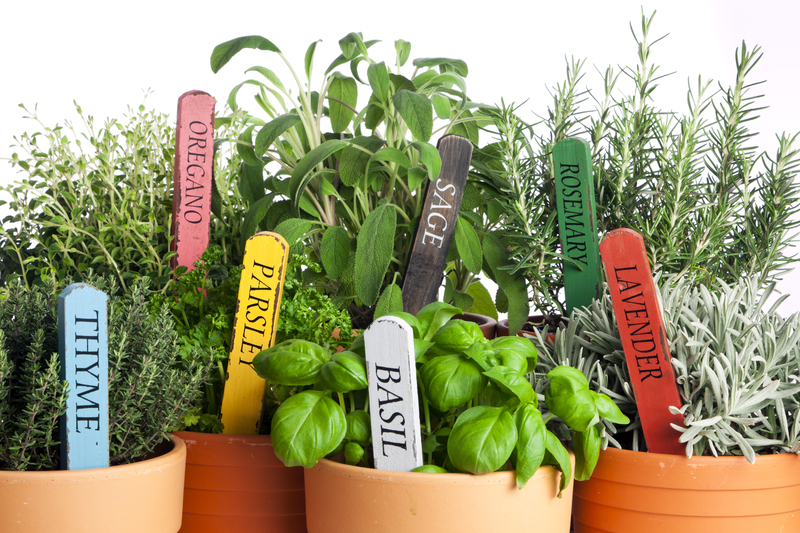Preserve Your Plants from the Wrath of the Weather
Posted on 26/06/2025
Preserve Your Plants from the Wrath of the Weather: The Ultimate Guide for Gardeners
Gardening brings endless joy, satisfaction, and beauty. Yet, nature's temperamental outbursts--hailstorms, heatwaves, frost, downpours, and winds--can threaten your cherished greens in an instant. Understanding how to preserve your plants from the wrath of the weather ensures not just their survival but thriving health and abundance. Whether you're an urban gardener, hobbyist, or professional, this comprehensive guide offers practical tips and innovative strategies to help your garden weather any storm.
Understanding the Challenges: How Weather Affects Your Plants
Plants are sensitive beings. While many adapt to their native environments, unexpected weather events can overwhelm even the hardiest varieties. To protect your plants from harsh weather, you first need to know which elements present the greatest threats:
- Extreme heat or cold: Leads to scorching, wilting, or frostbite.
- Heavy rainfall: Causes root rot, soil erosion, or outright flooding.
- Hail and wind: Results in physical damage, shredded leaves, snapped stems, or uprooted plants.
- Prolonged drought: Stresses plants, leading to stunted growth and increased vulnerability to pests and disease.
Let's delve into how you can actively preserve your garden from severe weather and keep your landscape lush, even when nature seems bent on destruction.

Essential Steps to Weatherproof Your Garden
1. Know Your Local Climate and Growing Zone
Every garden is unique, shaped by regional weather and microclimates. Start your journey to preserve your plants from the wrath of the weather by:
- Checking your USDA Hardiness Zone or local equivalents to understand typical temperature ranges.
- Observing your garden throughout the seasons--where do frost pockets form, and where does the sun linger longest?
- Maintaining a weather diary to track patterns of rain, storms, frost, and wind.
Armed with this knowledge, you can choose the right plant varieties, position them wisely, and anticipate harsh conditions.
2. Choose Resilient Plant Varieties
The best long-term strategy to protect your garden from extreme weather is to select plants well-suited to your climate:
- Native plants often thrive despite local weather extremes and require less intervention.
- Seek out drought-tolerant perennials, frost-resistant shrubs, and disease-resistant cultivars.
- Consult local nurseries--they often carry varieties bred to withstand your region's unique challenges.
3. Shelter and Strategic Positioning
Physical placement can dramatically increase your garden's resilience:
- Position delicate plants beside walls, fences, or hedges to provide windbreaks and thermal shelter.
- Group container plants so they shelter each other; cluster them in shielded corners during storms.
- Use raised beds or berms in flood-prone areas to elevate roots above pooling water.
Protecting Plants from Heatwaves and Drought
Preserving your plants from hot, dry spells requires a multi-pronged approach:
-
Mulching:
Apply a thick layer (2-4 inches) of organic mulch around roots. This shields the soil from sun, retains moisture, and reduces temperature swings. Try straw, bark chips, compost, or shredded leaves.
-
Efficient watering practices:
Water early in the morning to minimize evaporation loss. Use soaker hoses or drip irrigation to target the roots--avoid shallow, surface-level watering that fosters weak roots.
-
Shade cloths/row covers:
Drape lightweight shade fabric over beds or build simple frames for temporary cover; these can reduce sunlight by 30-50%, preventing heat scorch.
-
Hydrogel crystals:
Mix water-retaining crystals into soil to extend moisture availability for container plants and annuals.
-
Smart plant selection:
Favor succulents, lavender, Russian sage, yarrow, daylilies, and ornamental grasses for their reliable drought resistance.
Guarding Against Frost, Snow, and Sudden Cold Snaps
Cold is especially treacherous in early spring and late autumn when tender shoots are most vulnerable. To protect your plants from freezing weather:
-
Row covers and frost blankets:
Lightweight fabrics or horticultural fleece trap earth's warmth. Secure them before dusk and remove during the day to allow sunlight.
-
Cloche and cold frames:
Use glass jars, large cut bottles, or purpose-built cold frames to cover seedlings and compact vegetables.
-
Windbreaks:
Knitted windbreak netting, temporary fences, or even bales of straw can block chilling winds.
-
Mulching:
Pile extra mulch for insulation or tuck tender plants under leaves or pine needles before a heavy freeze.
-
Bring container plants indoors:
For precious tropicals and houseplants, relocate them to a garage, basement, or sunroom until the risk passes.
Winterizing Trees and Shrubs
- Wrap trunks with tree wrap or burlap to prevent winter sunscald and bark splitting.
- Prune dead or weak limbs so snow and ice don't cause breakage.
- Water deeply before the deep freeze to ensure roots start winter fully hydrated.
Preventing Flood Damage and Managing Excessive Rainfall
Water is life--until there's too much of it! Excessive rainfall causes root asphyxiation, leaches nutrients, and encourages plant disease. Some proven ways to preserve your garden from heavy rain and floods:
-
Improve soil drainage:
Amend clay-heavy soils with compost, sand, or perlite to increase porosity; raised beds and mounded rows help water run off.
-
Install French drains or swales:
Channels, gravel-filled trenches, or redirecting gutter spouts can prevent low-lying beds from becoming swamps.
-
Protect roots with mulch:
A thick mulch absorbs some water and prevents compaction.
-
Stake or trellis tall crops:
Prevent floppy stems from collapsing under saturated soil conditions--especially crucial for tomatoes, beans, and young trees.
-
Avoid walking on soggy soil:
Stepping on wet garden beds compresses soil, reduces airflow, and damages roots. Lay down boards or wait for drier conditions before tending beds.
Defending Plants Against Wind and Hail
Wind and hail are fierce adversaries in spring and summer, threatening to devastate your garden with little warning. Implement these strategies:
-
Create wind barriers:
Erect permanent or temporary fences, plant dense evergreen hedges, or use netting to shield susceptible areas.
-
Staking and caging:
Stake young or top-heavy plants with bamboo poles or use tomato cages for support.
-
Protective covers:
Set up garden hoops or row tunnels draped with netting or horticultural fleece as a shield during storms; removable covers also guard against hail.
-
Prune for airflow:
Thinning densely leafed shrubs allows wind to pass through rather than topple or break branches.
Smart Technology and Modern Solutions for Weather Protection
Today's gardeners can harness technology to further protect their plants from severe weather:
-
Automatic weather sensors:
Smart sensors send weather alerts to your phone and trigger irrigation, heating, or window closures in greenhouses.
-
Pop-up shelters and mini greenhouses:
These temporary structures can be rapidly set up over vulnerable beds and containers ahead of storms, heatwaves, or cold snaps.
-
Soil moisture meters:
Take the guesswork out of watering during droughts or after rainfall.
After the Storm: Emergency Plant Recovery Tips
Sometimes, despite your best efforts, severe weather strikes. Here's how you can aid your plants' recovery after extreme weather:
- Remove debris and repair support structures as soon as it is safe to do so.
- Assess each plant individually. Prune away damaged or diseased tissue; don't rush to remove frostbitten plants, as some may recover.
- Stake or replant uprooted specimens and firm the soil gently but thoroughly around them.
- Water deeply to relieve drought stress or help plants recover from flooding.
- Give a diluted feed of seaweed extract or gentle organic fertilizer to stimulate root growth and recovery.

Frequently Asked Questions about Protecting Garden Plants from Weather
-
How can I protect my plants from sudden temperature drops?
Use frost blankets, cloches, or bring potted plants indoors. Mulch heavily around roots and avoid pruning late in the growing season.
-
What's the best way to shield plants from wind damage?
Position plants against windbreaks, stake tall varieties, and use protective netting or temporary fencing during storms.
-
Can I save plants that have suffered hail damage?
Prune away shattered leaves and broken stems. Give the plants time, water, and maybe extra nutrients to regrow.
-
Do shade cloths protect against both heat and minor hail?
Yes! Lightweight shade netting can reduce heat intensity and diffuse the impact of moderate hail.
Conclusion: Take Charge and Preserve Your Plants from the Wrath of the Weather
Nature is unpredictable, but your garden need not be helpless. By combining smart planning, resilient plant choices, and proactive strategies, you can preserve your plants from the wrath of the weather. Whether you're facing blazing sun, pounding storms, or early frosts, these actionable steps help fortify your green oasis, ensuring it stays healthy, vibrant, and beautiful season after season.
Gardening is as much about nurturing as it is about anticipating challenges. With knowledge and preparation, your plants can weather any storm--and you'll enjoy a thriving, resilient garden year-round!

